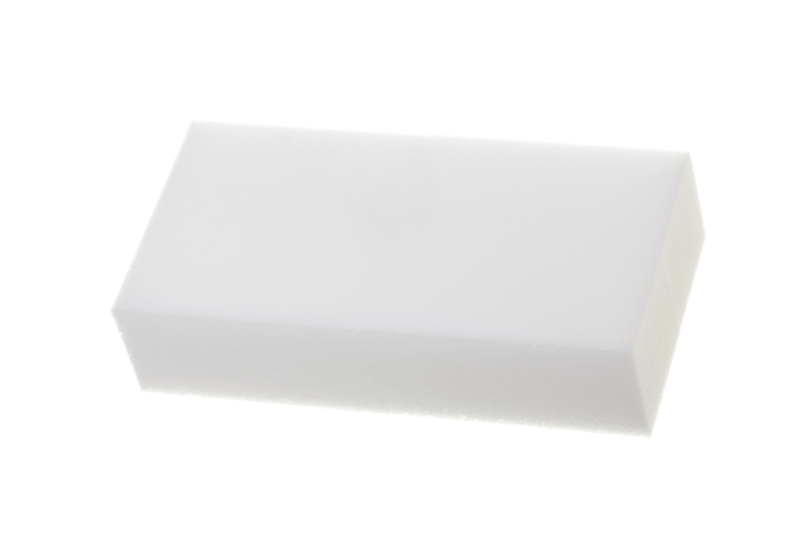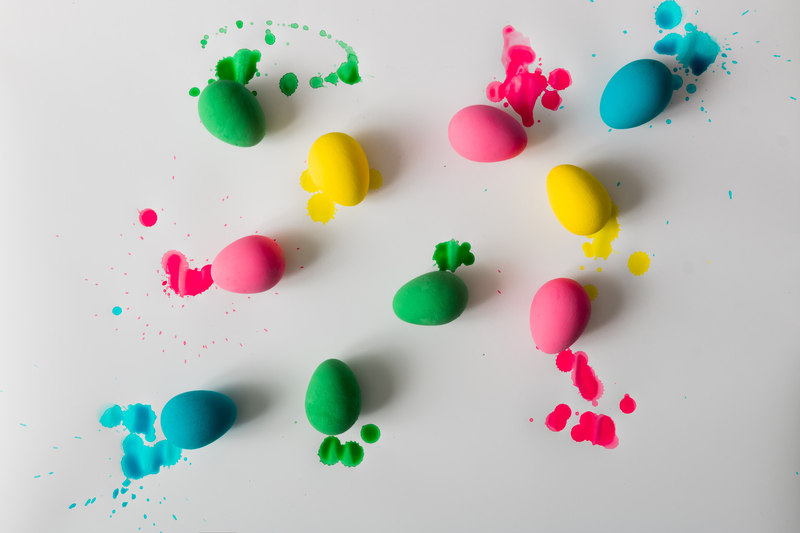Essential Tips for Washing Velvet Curtains Safely
Posted on 17/05/2025
Essential Tips for Washing Velvet Curtains Safely
Velvet curtains are an elegant and luxurious addition to any home decor, bringing a sense of warmth, comfort, and sophistication to your living spaces. However, their plush texture requires special care and attention when it comes to cleaning. Improper washing techniques can damage the delicate fibers, flatten the pile, or even cause color fading. If you value your beautiful drapes and want to maintain their appearance for years, it's important to know the best practices for washing velvet curtains safely. This comprehensive guide outlines everything you need to know about caring for velvet curtains--ensuring that your home remains gorgeous and inviting with minimal risk to your investment.
Why Velvet Curtains Need Gentle Care
Velvet fabric is renowned for its softness and rich texture, but these same qualities make velvet more vulnerable to damage. Unlike many other fabrics, velvet can easily become crushed, stained, or worn out if handled roughly or washed incorrectly. Here are a few reasons why extra caution is essential when cleaning velvet drapes:
- Delicate Pile: The raised fibers (pile) that create velvet's signature sheen and texture can become matted or misshapen without gentle treatment.
- Moisture Sensitivity: Too much water, especially hot water, can distort the weave, causing shrinkage or water spots.
- Color Transfer: Many velvet curtains are dyed with sensitive pigments that may bleed or fade with improper washing techniques.
Knowing what to avoid is just as important as knowing what to do. With the proper approach, you can safely clean your velvet curtains without sacrificing their luster and beauty.

Understanding Different Types of Velvet
Before deciding how to wash your velvet drapes, it's critical to identify what type of velvet you own. There are several varieties, each with slightly different care requirements:
- Cotton Velvet: Traditional and luxurious, but more sensitive to water and can shrink or lose its pile easily.
- Polyester Velvet: More durable and less likely to shrink; can sometimes tolerate gentle washing.
- Silk Velvet: The most delicate type--almost always requires professional cleaning.
- Crushed Velvet: Features a deliberately uneven texture, which can be more forgiving of handling but still needs gentle care.
- Synthetic Blends: Often combine durability with the look of higher-end velvets; check the care label for specifics.
*Always check the manufacturer's label* for specific cleaning instructions before attempting any cleaning process. If instructions are missing or unclear, it's best to err on the side of caution.
Pre-Cleaning Steps: Preparing Your Velvet Curtains
Proper preparation can help you avoid common mistakes and ensure the best possible results when cleaning velvet curtains. Don't skip these essential steps:
Read the Care Label
Locate any tags attached to your curtains. The care label will indicate whether the curtains are safe for machine washing, hand washing, or require dry cleaning only.
Test for Colorfastness
Before using water or any cleaning solution, test a small, hidden section of the fabric. Blot the area with a damp white cloth. If color transfers onto the cloth, your curtains are not colorfast and should only be cleaned by a professional.
Remove Dust and Debris
Use a soft brush or a vacuum cleaner with an upholstery attachment to gently remove dust, pet hair, and surface dirt. This prevents contaminants from embedding deeper into the fibers during cleaning.
Take Down Carefully
To wash velvet curtains safely, always remove all hardware like hooks or rings and carefully take the panels down to avoid excessive handling or tugging at the fabric.
Hand Washing Velvet Curtains: A Step-by-Step Guide
Hand washing is usually the safest option for most types of velvet curtains, especially if the care label allows it. Here's how to do it the right way:
- Fill a Large Tub With Lukewarm Water: Use cold or lukewarm water and add a small amount of mild, non-alkaline detergent. Harsh detergents can strip the velvet of its color and softness.
- Submerge the Curtains Gently: Lower the fabric into the water, making sure it is fully submerged. Avoid wringing or scrubbing.
- Agitate Lightly: Swish the curtains around carefully using your hands. Do not twist, rub, or brush the fabric, as this may damage the pile.
- Soak and Rinse: Let the curtains soak for 5-10 minutes. Then drain the soapy water and refill the tub with clean water, gently agitating to rinse away detergent. Repeat until thoroughly rinsed.
- Gently Squeeze Out Water: Lift the curtains from the water, supporting their weight. Squeeze (do not wring) them to remove excess moisture.
*Tip:* Washing one panel at a time can help prevent overcrowding and allow for more controlled handling.
Can You Machine Wash Velvet Curtains?
Some modern synthetic velvet curtains may be labeled as machine washable. If you choose to use your washing machine, follow these washing velvet curtain safety tips:
- Use a Gentle Cycle: Select the delicate or wool cycle and make sure the water temperature is cool or lukewarm.
- Low Spin Setting: A slow spin will minimize the risk of creases and damage.
- Wash Separately: Do not overload the machine--wash velvet curtains by themselves to reduce friction.
- Mild Detergent Only: Avoid bleach, fabric softeners, or harsh chemicals which can harm the velvet fibers.
- Use a Mesh Laundry Bag: Placing velvet drapes in a large mesh bag can help protect them during the wash cycle.
*Note:* Machine washing is not recommended for cotton, silk, or vintage velvet. When in doubt, opt for hand washing or professional cleaning.
Spot Cleaning Velvet Curtains
If you notice a small spill or spot on your curtain, it's best to act quickly with a targeted approach:
- Blot, Don't Rub: Use a clean, dry cloth to absorb as much of the spill as possible.
- Damp Cloth: Dampen a cloth in cool water and blot the area gently without pressing too hard.
- Mild Detergent Solution: If the stain persists, dip a cloth in a solution of mild detergent and water, then dab gently. Follow by blotting with a damp, clean cloth to rinse.
- Let Air Dry: Allow the treated area to air dry completely. Avoid using heat or direct sunlight.
Never use abrasive cleaning tools or powerful stain removers on velvet, as they can alter the fabric's texture or color.
Drying Velvet Curtains Safely
Improper drying can ruin even the most meticulous washing routine. Here's how to dry velvet curtain panels for best results:
Press, Don't Wringe
After gently squeezing out excess water by hand, lay the curtains flat on a large, clean towel. Roll them up in the towel to absorb even more moisture.
Air Dry Flat
Lay the curtains flat on a clean, dry surface or hang them over a large rack away from direct sunlight or heat sources. Smooth out any wrinkles with your hands. This helps maintain the shape and prevents the pile from being crushed.
Avoid the Dryer
Never tumble dry velvet curtains. The heat and tumbling effect can permanently damage the fabric, causing shrinkage, wrinkles, or loss of pile.
How to Maintain and Revitalize Velvet Curtain Pile
Even with the best washing and drying methods, velvet may sometimes lose a bit of its plushness. Here are some trusted ways to restore its original texture:
- Steam Carefully: Hold a clothes steamer several inches from the fabric and gently steam to lift flattened fibers. Alternatively, hang the curtain in a steamy bathroom (not directly under the water).
- Brush Gently: When completely dry, use a soft-bristled brush to lightly fluff the pile in the direction of the nap (the way the fibers naturally lay).
- Avoid Heavy Objects: Don't pin, tape, or stack heavy items on velvet curtains, as this can permanently flatten the pile.
When to Choose Professional Velvet Curtain Cleaning
Not all velvet curtains are suitable for at-home washing. If you encounter the following situations, it's best to trust a professional dry cleaning service to avoid inadvertent damage:
- Silk Velvet, Vintage, or Heavily Embellished Curtains: These require expert handling with specialized cleaning solutions.
- It's Labeled "Dry Clean Only": Ignoring this advice can lead to irreversible shrinkage, color loss, or fabric distortion.
- Severe Stains or Odor: Deep cleaning with professional equipment and know-how may be necessary.
If you have doubts, contact a reputable local dry cleaner who has experience with velvet or luxury textiles. Ask questions about their process and ensure they understand the sensitivity of the fabric.

Long-Term Care Tips for Gorgeous Velvet Curtains
Keeping your velvet curtains beautiful isn't just about proper washing--it's also about ongoing maintenance. Follow these easy care tips to preserve their look between cleanings:
- Regular Dusting: Lightly vacuum or brush curtains every few weeks to keep dust and dirt at bay.
- Avoid Direct Sunlight: Sun exposure can cause fading and weaken fibers over time. Consider lining your curtains or using sheers to shield them from harsh rays.
- Rotate Curtains: If possible, alternate pairs in high-traffic areas to ensure even wear and exposure.
- Prompt Stain Removal: Always address spills or spots as soon as they happen.
- Keep Pets at Bay: Pet fur, claws, and dander can damage fine velvet--consider keeping pets away from curtain areas or regularly grooming them.
Final Thoughts: Enjoy Luxurious, Clean Velvet Curtains
With the proper knowledge and careful handling, washing velvet curtains safely is entirely possible. Whether you choose to hand wash, machine wash, spot clean, or rely on professional services, always consider the unique needs of your specific velvet fabric. Remember: gentle cleaning, proper drying, and preventive care are the secrets to keeping your luxury curtains looking their absolute best.
Implement these essential tips for washing velvet curtains safely and you'll enjoy their sumptuous feel and gorgeous appearance for many seasons to come. For more home cleaning advice, continue exploring our articles--and give your home decor the elegant care it deserves!





